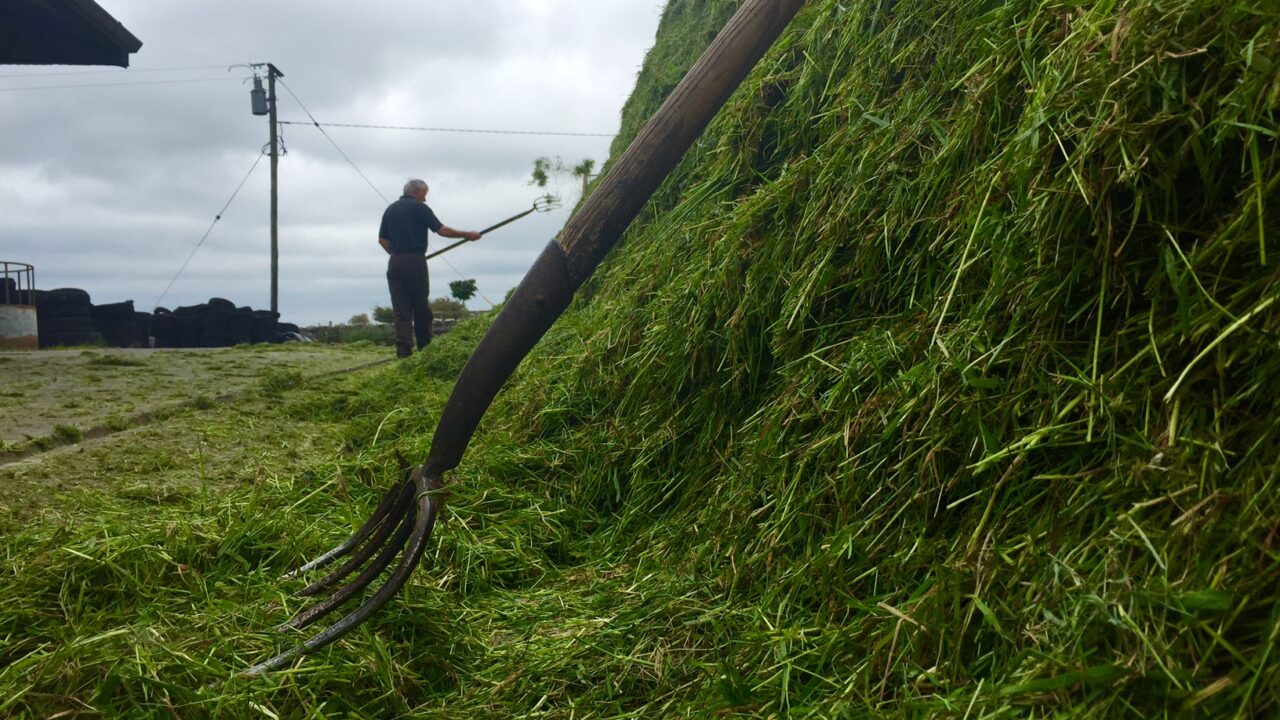There is no difference in the quality between baled and pit silage, according to Teagasc’s Dr. Joe Patton.
He said it was a myth that bales were the better-quality feed and that it all came down to the quality of the material and the pre-cutting management of the grass.
“The worst of silage can be found in bales and the best of silage can be found in bales,” Patton said.
“I have often seen silage bales with dry matter digestibility (DMD) levels in the low 60s. This will just about suffice for a dry suckler cow. In fact, she might even lose some condition on it.”
Patton added that if there was a small amount of high-quality silage to be made, bales can be a very flexible option.
The Teagasc researcher also touched on how farmers choose an ensiling method.
Farmers with large acreages to cut tend to pit their silage, he said, while the smaller suckler farmer might not cut enough to justify building a clamp.
“Bales are perfect [for these farmers]. They are very flexible,” he said. Farmers with 80-120 dairy cows will generally favour pit silage.
Can they be used together?
Baled and pit silage can work very well in association with each other. During periods of grass shortages, high-quality bales can support livestock performance, he said.
Feeding baled silage, as opposed to pit silage during the shoulders of the year, eliminates the need to open up the pit too early in autumn.
Patton also said that farmers should consider feeding high-quality silage to young stock.
“We have to look at the fact that we need more than one type of silage on the farm. For example, older suckler cows will need a slightly higher-fibrous feed than young stock.”
Does chop length matter?
While chop length might make a difference, it isn’t the be-all and end-all, the researcher pointed out.
“A cow might graze covers of 8-10cm in height, leaving a residual of 4cm. This means that the cow is taking bites of grass, which are about 5cm in length.
“This is what’s natural to the cow, so 5cm is roughly what it should be. It is possible to alter the chop length of pit silage,” he added.
Patton uses a cattle ear-tag as a benchmark for good chop length.
If more than 25% of silage in the pit is longer than the base of the ear-tag, chop length is sufficient.
However, the researcher stressed that the focus shouldn’t be on chop length alone. “Once the pH is correct and the silage has a high DMD value – that’s what matters,” he said.
A pause for thought
Patton believes that many farmers don’t recognise the importance of having different quality silages.
- What type of stock do I have?
- What are their requirements?
- What type of silage do I need and how much?
Patton’s final piece of advice was that higher quality silage could be more easily achieved early on in the year.
